In this guide, I’m going to show you some excellent options for stage lighting that even a beginner can use, and I’m also going to help drop a little knowledge so that you can know how to optimize your stage – while keeping it simple.
When you’re ready to start performing live for an audience, it’s amazing how important the lighting for your act will be. It doesn’t matter if you’re a traditional musician or a DJ, lighting not only provides some cool effects for your show, but it also makes it easier for your audience to watch you play. In addition to this, lighting also adds a sense of drama to the show, so if you’re looking to tell a story with your performances, then you should invest in the lighting and stage effects that you need for an optimal audience experience.
It amazes me how the lighting effects that you can have in an average performance can be accomplished with a relatively meager investment. With just a few hundred dollars, you can craft a unique ambiance that your fans will remember, which will have your fans returning for another show soon. The technology is also fantastic; lights can be linked to each other, and a single fixture can move and change colors on a pre-programmed pattern.
I’ve been a musician for just about as long as I remember. I’ve been playing guitar for decades now, and I have hundreds of live performances under my belt. As a result, I understand a bit about stage lighting because I am a very hands-on type of person, which means that I help organize the lighting that we use for our performances. In my opinion, every musician should intimately get to know the stage lighting of their sets so that they can craft a certain feel that goes along with their music.
-
 $88.88Check on Amazon
$88.88Check on AmazonBlend colors to create entirely new ones on the included stand or hang it from the ceiling above your setup.
11/12/2024 07:34 pm GMT -
-
-
 $729.99Check on Amazon
$729.99Check on AmazonHigh-quality spot light that will project detailed patterns onto any surface.
06/29/2025 02:04 am GMT -
Types of Lighting You will Need
It’s not all about illumination when you’re looking to provide a good lighting experience for your performances; you’ll at least need two types of lighting to accomplish the desired effect:
Backlighting – When you’re doing a show, the last thing you want is for you and your fellow performers to appear flat and un-layered. For this reason, you can use backlighting, which makes the performers appear three-dimensional. Backlighting is hung upstage and will shine towards the area in which you’ll be delivering your performance.
Additionally, this type of lighting is useful because it won’t reflect back at the viewer; instead, a halo effect is created that accentuates you and your fellow performers. I like to use multiple changing colors for my backlighting; when you have a broader wash of colors, it provides a very visually appealing experience for the audience.
Effect Lighting – Speaking of colors, adding color and texture to your performance is a great way to enhance your audience’s experience as well. In most situations, providing a cohesive effect lighting experience can be done using DMX controls, which will allow you to coordinate your lighting effects so that a unique experience can be accomplished. It’s essential to understand that your effect lighting setup is not for illumination; you’ll be expressly using these effects to tell a story, add drama, or draw attention to an aspect of your show.
Lighting Positions
In addition to the types of lighting, you’ll also need to understand how the position of your lighting effects can affect your overall experience.
Front Lighting – This is the type of lighting that will provide the primary source of illumination for your show. The use of front lighting falls under McCandless’s Theory of Lighting, which is a theory that is designed to add a feeling of daylight to a stage. This is useful in both dramatic and musical performances, and it is a style of lighting that significantly reduces the appearance of shadows. In my opinion, if you’re going to want to accentuate yourself as the performer/DJ, this is an essential form of stage lighting.
Side Lighting – Side lighting enhances the performer, especially if the performer is moving, so this is a useful type of lighting to consider if you will have dancers following your music or if you like to move around the stage as you perform. I find that this type of lighting is good for really accentuating the arms, mid-torso, and legs, and you can even have some side lighting that can highlight even lower areas of the body.
High Side Lighting – Typically, this type of lighting is placed anywhere between the 30- and 60-degree angles and will highlight the upper portion of the body. As a result, the shoulders, arms, mid-torso, and the top of the head become really accentuated. In modern musical performances, this is a good style of lighting to highlight stage dancers, the performers, and any stage objects that you opt to use. There are two types of high side lighting: high side left and high side right, which both combine to create a filled effect on the performers.
Down Lighting – The combination of the halo effect from backlighting and down lighting really can help the audience see your performance more clearly. Downlighting is positioned at your feet and shines upwards towards you and fellow performer’s faces. As a rule, these beams will require a bit of overlap so that there is ample coverage and you can be highlighted adequately during your musical performance. With down lighting, the center of the beam should hit about shoulder-height for optimal illumination.
Types of Fixtures
Wondering what types of fixtures to consider for your show? As a beginner, it can be very confusing to find the right accessories for your performance, so here’s a bit of a cheat sheet that you can use to create a lighting profile for your music:
Ellipsoidals – Typically referred to as an ERS, an ellipsoidal reflector spotlight is designed to provide a powerful and well-defined beam for the illumination of a subject. This device uses a projector and reflector combination to boost and direct the output light through a barrel and lens so that the light is very focused.
Followspots – If you’re looking to highlight your performance as you move, a followspot light is crucial as these lights can be moved via an operator so that a subject is tracked during a performance. Usually, this requires an operator, but fortunately, this can be done in a lighting booth via software.
Fresnels – Fresnel lights were initially developed for lighthouses, but their unique lighting system has become a major go-to for stage lighting. Pronounced Fray-nel, the Fresnel light has concentric rings on the lens itself so that the light bends towards the subject. When you think of those large movie spotlights at premieres, you’re thinking of Fresnel lights. These lights produce a lot of heat but are perfect for providing highly-defined shadows if that’s what you’d like in your show.
Par Cans – The “par” in par cans is short for parabolic aluminized reflectors, which produce both narrow spot and wide flood light. These are referred to as cans because the barrel of the light is vaguely can-shaped, but in any situation, these lights are excellent for illumination because of their versatility. In fact, these are commonly used for both clubs and concerts but are often used in commercial lighting as well.
Floodlights – Usually, when you see a floodlight, it’ll have a “bulb in a box” shaping that is very identifiable. Usually, in modern lighting, the bulb will have a forward reflector to project the light, but all flood lights provide a “flood” of light that is somewhat unfocused. These lights aren’t really controllable, but it provides excellent illumination for your shows. These days, you can find floodlights that are LED-based, which use less power.
Strip Lights – These lights, in modern musical performances, can be handy because they typically provide a multi-colored, effects-driven style of illumination that’s useful for many genres of music. Strip lights can also vary in size, and many DJs use these types of lights to direct focus to aspects of their performances or gear.
Controlling your Lighting
I find it amazing that lighting effects are so controllable in modern stage lighting setups. In fact, with the right tools, it’s very easy to create song-based lighting performances that will move with you as you work through your set. One of the most common forms of lighting control is DMX. DMX lighting can be somewhat confusing at first; you’ll need a controller, a DMX-compatible lighting solution, and the DMX cables.
When you’re working with DMX-compatible lights, you’ll be able to daisy chain them together via DMX in and out connections – you merely lead a cable from the controller to the light and then wire up additional lights in a chain. Typically, a controller has several fixture channels that correspond with a device on your daisy chain. Once you’re on a channel, you can opt to change the color of the associated light fixture or cause it to display another set of effects like a strobe effect.
Each of the fixtures that are connected via DMX wiring will be controllable via the main console, which means that different aspects of your show can have different effects coming from different locations, and you can even opt to have multiple fixtures on a single channel so that you can control their colors and effects with a single slider. With a good DMX controller, you can even create “scenes,” which will allow your fixtures to start up pre-programmed routines for certain parts of your set, which are controllable by your lighting guy.
Common Lighting Effects
Here are a few types of effect lighting rigs that you can expect to encounter:
Gobos – Every band has a logo, and if you use a gobo light, you can display this logo onstage. Additionally, messages and images can also be projected by gobo lighting, which is perfect for event performances.
Beam Projectors – These lights have multicolored lenses that usually spin in an orb and project light of different colors onto the stage and into the audience. The sphere is motorized, so you can expect to see a constantly-spinning array of colors.
Moonflower Effects – Often referred to as just “flower effects,” moonflowers use multiple lenses to create different geometrical designs. Usually, these aren’t DMX-controllable.
Scanners – These are often DMX-controllable and pan or tilt using an internal motor. Some use presets and provide color lighting for your show.
Disco Balls – If you’re shooting for a more 70s-era effect, then everyone is familiar with the disco ball-style of venue lighting. These days, many products use LED technology to provide a more varied lighting experience.
Strobe Effects – Strobe lights use blinking patterns that are reminiscent of the blinking lights from silent movies. Strobe lights can be multicolored and are perfect for live performances or DJ sessions in dance clubs.
Each of these lighting effects can be used to enhance your show, and if you’re DJ’ing, you can use these effects to make the party more appealing to your audience. Positioning is crucial, so it may take a few shows to find the light orientation that best enhances the overall experience, but once you find the best lighting options, it will be an incredible sight to see.
Our Recommendation:
Chauvet DJ 4BAR Tri USB Tri-Color LED Wash Light Effect System
Since lighting for the entire stage is going to be your priority when you first start looking for a lighting rig for your gigs, the product that I have selected for our recommendation is the CHAUVET DJ 4BAR Tri USB Tri-Color LED Wash Light Effect System, which is a wash lighting that will brighten your entire stage. It is easy to use and set up, which is part of what makes it an excellent choice for a beginner.
There are four lighting fixtures on the system, which means that there is a total of 28 LED lights. Each one of these lights is a three-watt, tri-color RGB, which means that you can have an intense output of light in shades of red, green, or blue. Each light fixture can be set to a different color as well, so it can create more effects on stage. The fixture even comes with a tripod that will make setting it up even more straightforward. Also, this tripod extends from 56 inches to 91 inches, which will make adjusting the height of your lighting simple.
Each of the fixture heads can be adjusted and focused to meet your stage lighting needs as well so that your entire area is covered. In addition, they are only 1.6 inches deep, which means they can comfortably fit on a narrow part of the stage, and when it comes time to pack up after the gig, they can fold down into a size that fits into a carrying case with ease.
I like that this system comes with a foot pedal that you can use to control the lighting effects. In fact, you can set the lights to be automated or sound-activated, which allows you to have them do different effects at specific points during your performance. Automated presets are also available as well as the ability to turn off the lights completely. I love this functionality because it gives me a lot of control right from the device. On the back of the lighting system, you will find DMX in and DMX out. This is where you can connect a standard lighting controller to use during your performance as well.
There is also a microphone on the system so that you are set up for sound-activated lighting, and a power output that allows you to chain more than one light system together for a more prominent display. This is extremely useful when you are at an outdoor gig or a place without many outlets.
Runner-Up
LaluceNatz Par Lights with RGB 18LEDs Wash Light
Blend colors to create entirely new ones on the included stand or hang it from the ceiling above your setup.
Our runner-up is another RGB LED that comes with a total of 18 one-watt bulbs. Not only can you get red, green, and blue in your lighting effect, you can blend these colors as well to create entirely new ones that will dazzle your stage. The light itself comes attached to a small stand that can be used to sit the light system on stage or hang it from the ceiling above your setup. The outside of the light is constructed from a very durable plastic material that will ensure that it does not get damaged during travel or when you are setting up.
This system comes with a remote that makes it easy to control the light. In fact, there are actually two remotes included in each box, which means that you will always have a spare to use. With this device, you can turn the lights on and off as well as change the mode that you have the light set on. There are a total of eight different modes that you can select that range from allowing you to have the color of the lights change with sound to different effects that you may want to have when you are using the lights during your performance.
You can also change the settings on the back of the light, which can be convenient if you are standing next to the master light, and you need it to switch modes. This is especially useful when you have a few of these lights connected to increase your coverage of the venue. There is also a DMX in and out that you can use to connect to a standard lighting controller. If you are looking for effects on a wall or on the side of a stage, I love the up lighting that you can get with this device. It is quite bright, and you can set it to change colors with sudden flashes or blend together for a more subtle change.
Other Options to Consider
1) Chauvet DJ Colorband Pix M USB Moving D-Fi LED Strip Light
Individually programmable, the ten lights on this strip light create rich effects.
As another lighting system from Chauvet DJ, this lighting system is one of the best if you want a large display that moves. I love the effects that this lighting strip can create. In total, there are ten lights on the strip that can create a rich backlighting effect, wash lighting, or something a little more intense for your performance. If you position the lights right, you can even create a sweeping effect that will look amazing, especially when you use more than one device for your performance.
One of the features that is great with this lighting system is the fact that it does not require a traditional lighting controller to adjust the modes and the colors of the lights. In fact, this unit has D-FI USB compatibility, which means that you will be able to use your Smartphone to control the lighting as you are performing. You can program the lights to be on at all times, or you can set them to be activated by sound, which means that when you start your playlist, it will light up the stage. Each light on the device can be controlled individually, so you will have a lot of options when it comes to lighting effects.
2) SHEHDS Professional Lighting Aluminum IP65 Waterproof 7x18W
The next stage lighting option is a par can lighting system that has seven LED lights in total. I like the way this light looks positioned along the wall, but if you are going to use multiple of these lights, they work well in fog. They also have a relatively low price point, so it is an excellent product for a beginner to consider for their first lighting rig. Also, I like the dimensions of this light because it is only seven square inches, and 5 inches deep, so it can easily be stored to make traveling to your gig simple – or setting up for a church, night club, party, wedding, or disco party.
On the back of the light, you will notice that there are a display and four buttons that you can use to change the mode of the lighting system as well as the color of the lights that are being displayed. There is a DMX in and out where you can use a traditional lighting controller as well as an input that allows you to connect other devices to your main light. This unit also comes with a stand that makes it convenient to set on stage as well as hang from overhead.
3) Blizzard Lighting LB PAR HEX LED
Solid light, with a strobe light effect.
If you are looking for a reliable lighting option that is going to be great for both front lighting as well as side lighting on the wall. I like the look of this light because the light is not too large, and it comes with a base that can be used as a stand on the floor or a bracket that is secured above where you are going to perform. It is also made using a durable, scratch-resistant plastic that will not get damaged when you need to pack and unpack the lighting between gigs.
Each of the 12 lights are 15-watt bulbs, which I think does wonders to brighten the lighting display that you are creating. It is an RGBAW LED that is also designed with a UV lighting that will give your entire stage an eerie purple glow. Though, there are plenty of other options when it comes to color as well. In fact, there are 12 built-in programs that you can use during your performance, or you can set it to sound active mode so that the lighting effects begin when you start playing music. There is also a strobe light effect on this model, which can be great for a DJ to use at a party. On the back, you will find a display, a control panel, a speaker, a DMX in and out, and a power in and power out.
4) CHAUVET DJ LED Lighting FOLLOW SPOT 75 ST
High-quality spot light that will project detailed patterns onto any surface.
As yet another product from Chauvet DJ, this next lighting option is one that is going to provide a spotlight effect on your stage. I love the moving head effect, and in my opinion, is one of the best moving head lights that you can purchase in this price range. While the head of the lighting display is quite large, one of the things that I like about this unit is that it has a small footprint, and it has a scratch-resistant surface that will increase its durability – while projecting detailed patterns onto any surface.
I like how easy it is to program the lighting effects that this unit puts out as well. It has a clear navigation that allows you to change the color, the focus, and the strobe pulses. The color gobos are on a wheel that rotates according to the color button selected. These controls are located on the front of the base, while the back has things like a DMX input/output and an input to connect more devices. You can even use gobos in the lighting if you want to create an effect on the wall or the floor. There is also a dimming capability on this unit, so you can decrease the brightness when you use certain effects while keeping others bright.
5) ADJ Products Mega Par Profile Plus LED Lighting
Al lightweight and flexible portable LED option.
The next lighting system is an ADJ Products creation that is designed to give you a great lighting option without breaking the bank. In fact, this light, which has 107 LEDs is a good value. It also has UV color mixing, so the options that become available to you for lighting can enhance your performance significantly. The only downfall with this product is that the UV light does not reach that far; in fact, it will only reach about 16 feet. For this reason, I prefer to use this lighting option for walls, backlighting, and stage enhancement, especially when using the UV lighting effects.
If you are performing in or lighting up a large area, you may want to connect a few of them to get a wider area of effect. There are five channels that you can select from, which include a dimming mode, an auto mode, a static color mode, a controlled angle mode, and a sound-activated mode. Each of these can be controlled on the back of the unit or with a standard DMX lighting controller of your choice.
Wrapping it Up
The different types of lighting that you can get can enhance to the experience that you provide for your audience and make your performance more memorable. Each of the products that I highlighted in the guide can certainly add a bit of flair to your act as well as provide some much-needed illumination. Not sure where to start? Please take a look at the guide that I posted before my reviews so that you can put together a lighting display that fits your performance. Once you complete a performance with great lighting effects, you will never want to go back to a simple stage set up without lights again.
Finishing up, here’s a recap of the competition:
Blend colors to create entirely new ones on the included stand or hang it from the ceiling above your setup.
Individually programmable, the ten lights on this strip light create rich effects.
Solid light, with a strobe light effect.
High-quality spot light that will project detailed patterns onto any surface.
Al lightweight and flexible portable LED option.
Sources
- Negley, L. (2018, August 8). Personal Interview
- A Crash Course in Lighting. Retrieved from https://www.vls.com/lighting-101
- PG Stage. (2014, June 19). Light Up the Stage with 4 Basic Principles. Retrieved from https://ccskills.org.uk/careers/advice/article/light-up-the-stage-with-4-basic-principles
- Band and DJ Lighting and Stage Effects Buying Guide. Retrieved from https://thehub.musiciansfriend.com/dj-gear-buying-guides/band-and-dj-lighting-and-stage-effects-buying-guide

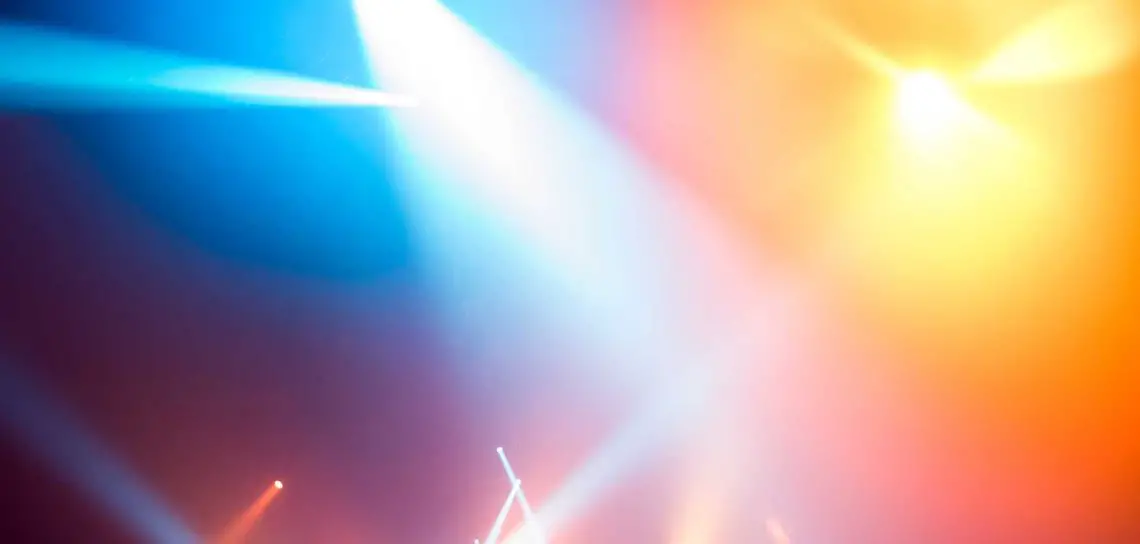






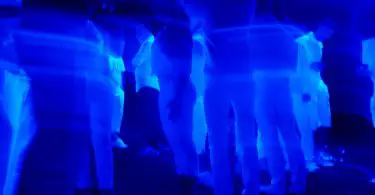
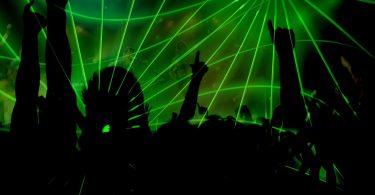
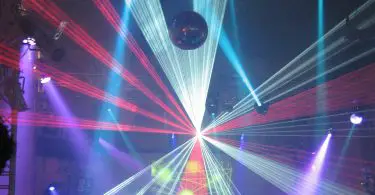
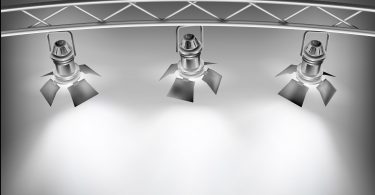
Start the discussion at talk.hearthemusicplay.com